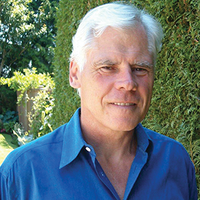
I recently got an email from a client who is turning 70 and wanted to know if, that now that he is claiming Old Age Security (OAS), he should take a salary or dividends.
In reviewing his particular situation, I recommended that he take dividends and his wife a salary. I said the company had retained earnings of $300,000 and he could take dividends out of this amount and pay about 10% less tax than on salary.
I was gobsmacked by his next email. “What are retained earnings?” This question came from a seasoned business owner, a professional engineer.
So, can you explain exactly what retained earnings are? The next question is “should you take dividends or salary?” That’s a much tougher question to answer.
Retained Earnings
Retained earnings are the after tax-profits (earnings) that the company has retained in the business over its lifetime. Privately held businesses pay approximately 13% corporate tax on annual profits up to $500,000. The 13% tax is a combination of provincial and federal tax rates and varies a little by province. The current federal rate is 10.5% and in BC the provincial rate is 2.5% making a total of 13%. We are referring to active business income here. Do explore this concept with your accountants as we are not privy to your personal circumstances and therefore can’t give direct advice.
Excess Salary
A company should avoid paying out excessive salaries to the owners to allow it to minimize income tax and to provide working capital for the company.
For example, if you took a salary of $100,000 and the company had profits, after your salary, of $150,000 you would pay significantly less tax than if you took the entire amount out as salary. The $150,000 would only attract tax at 13% compared to around 44% if that $150,000 was added to your personal income. You are deferring tax of approximately $45,000. The company can use that money for working capital or other business needs. When you take out that $150,000 as a dividend in future years the tax will catch up with you, but that could be in 10 or 20 years time. As you build up your retained earnings this could be a very significant amount, and at that time your marginal tax rate would likely be lower.
Defer Income Tax
The first strategy then is to defer income tax by keeping excess profits in the company (or holding company) and only take what you need for personal use and to top up RRSPs and maybe TFSAs.
The second strategy is to determine how and when to take the dividends out of the company.
The best time to do this is when you retire or sell the business. If you sell the shares of the business you want to ensure that the retained earnings are in a holding company. If you sell the assets it doesn’t matter.
If you and your spouse are shareholders, with the same class of shares, you would each take the same dollar value of dividends. Likewise, other owners of those class of shares also must take the same dollar value of dividends.
The advantage here is that now you are retired you have much lower regular income and therefore will avoid the higher tax rates. So, when you take out that $150,000 the tax on it will be significantly lower than the 44% you would have paid when the company earned the income, and you will get a credit for the tax the company paid. Typically, I find that contractors save an overall of about 10% of the tax. So, deferring the tax for a number of years so that your company can use the money and then paying 10% less tax is appealing.
Avoid the OAS Claw Back
Also, make sure to balance your dividend income and other income to ensure that you avoid a clawback on your Old Age Security. The clawback starts at an income of $73,756 per individual.
Let me clarify a few points. Dividends can be paid up to the full amount of retained earnings over as many years as you wish. Because the company has already paid corporate tax on the dividends you get a credit for that tax when you declare the dividends on your personal tax return. When you take a salary the company shows that amount as an expense, which reduces profits and issues you with a T4 up to December 31. Dividends are paid from after-tax earnings and are based on the tax year for the company and you are issued a T5.
In the average HVACR company based on the 2016 financial benchmark report that I completed for HRAI the retained earnings were over $1 Million per company. This is a serious number and allows these companies to continue with strong tax planning. The average company with annual sales under $2 million had retained earnings more than $400,000. As you can see this is a really key issue for you.
If you are thinking of selling your company or are getting close to retirement you should review these strategies with your accountant. If you are continuing in business, you should start planning on how to maximize your income by minimizing and deferring taxes. Happiness is cash flow.
New Passive Income Rules and Income Sprinkling Rules
Make sure you are up to speed on these and know how they will impact you starting ins 2018 and 2019.
Your Plan of Action
Explore your options with your accountant. A prudent business person will minimize and defer taxes for as long as possible and avoid the OAS clawback.
Put your tax strategy in place.
If you have investment income and have not capped out on your TFSA then transfer the sources of that income to your TFSA. •
Ronald Coleman, B.Sc.C., FCCA, CMC, is an accountant, author, certified management consultant and professional speaker from Vancouver, BC who works primarily with specialized contractors.
